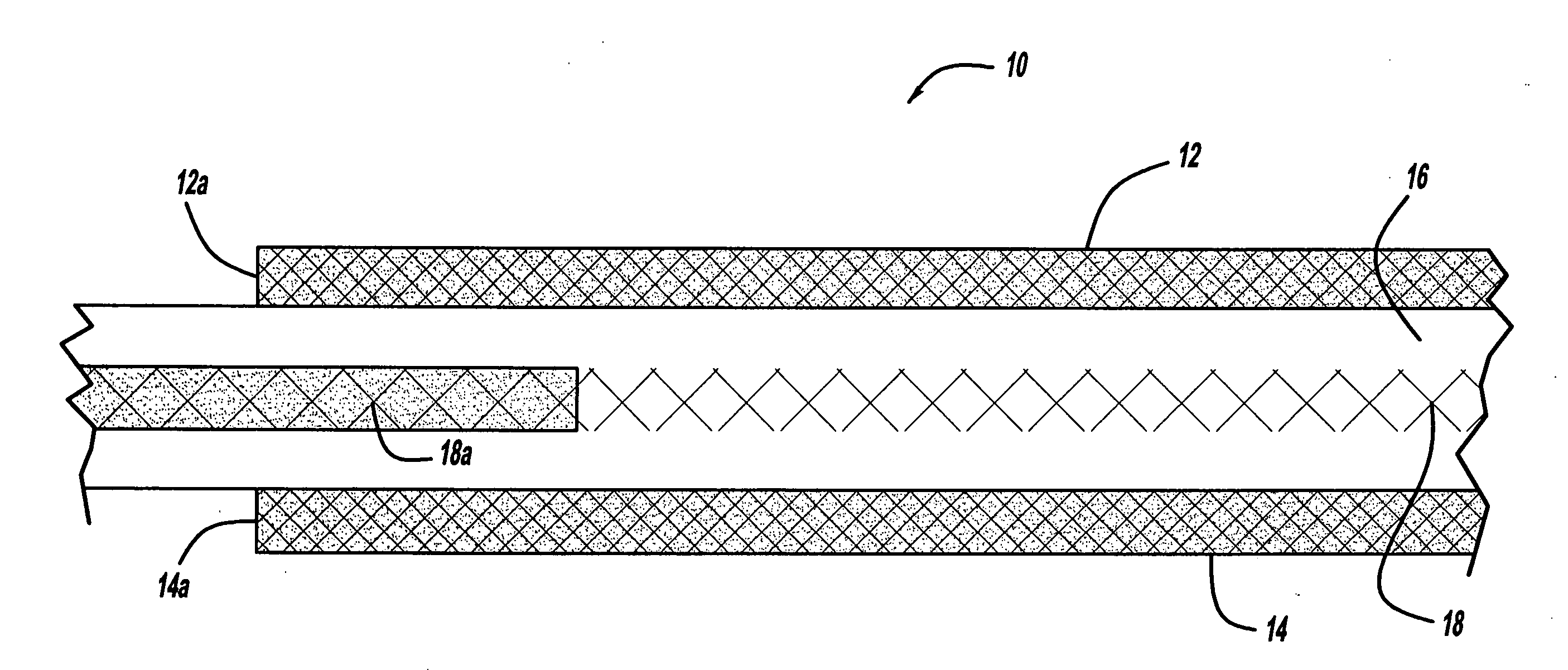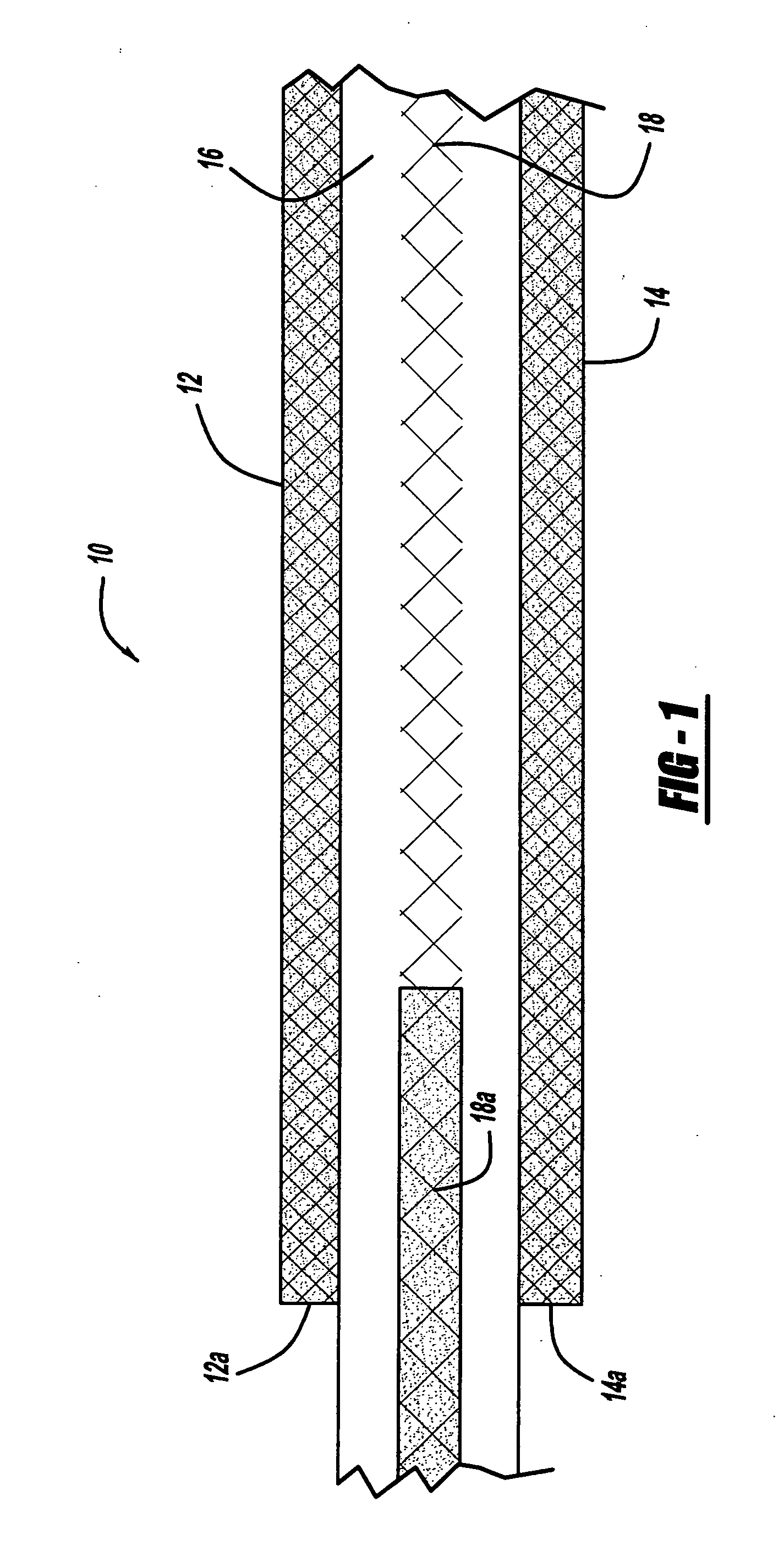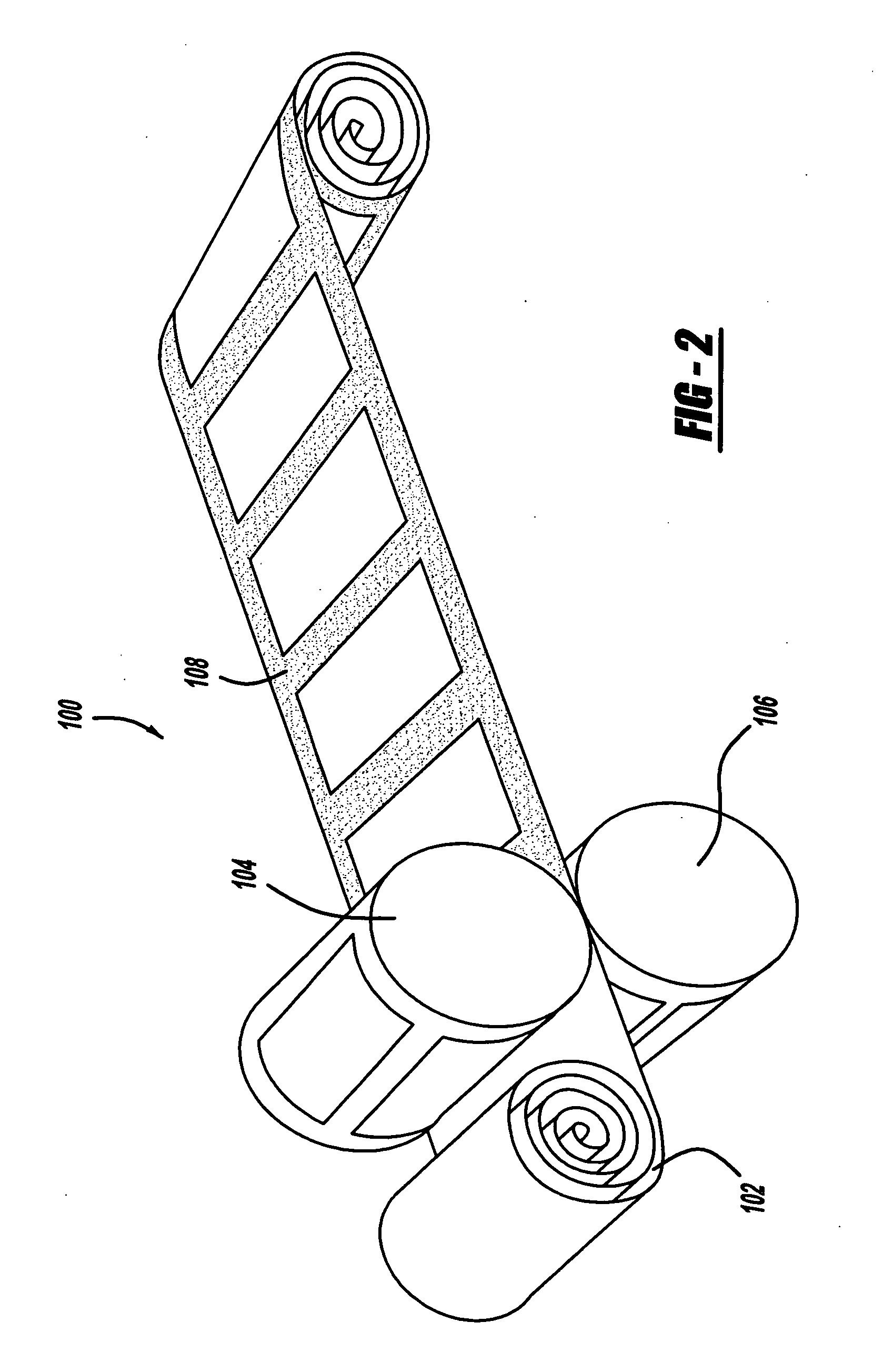Edge design for ePTFE-reinforced membranes for PEM fuel cells
a fuel cell and eptferein-reinforced technology, applied in the field of fuel cells, can solve the problems of relatively high manufacturing cost of membrane electrode assemblies, difficult proton barrier structures, and high cost of construction
- Summary
- Abstract
- Description
- Claims
- Application Information
AI Technical Summary
Benefits of technology
Problems solved by technology
Method used
Image
Examples
Embodiment Construction
[0014]The following description of the embodiment of the invention is merely exemplary in nature and is in no way intended to limit the invention, its application, or uses.
[0015]Referring to FIG. 1, there is shown a schematic view of a membrane electrode assembly 10, in accordance with the general teachings of the present invention. The membrane electrode assembly 10 includes two spaced and opposed electrode layers 12 and 14, respectively, such as cathode and / or anode layers. The electrode layers 12 and 14, respectively, are provided with edge portions 12a and 14a, respectively.
[0016]Disposed between the electrode layers 12 and 14 is a membrane layer 16, such as, but not limited to, an ionomer membrane layer. A reinforcing layer 18, such as, but not limited to, ePFTE is disposed within and imbibed by the ionomer material of the membrane layer 16. The reinforcing layer 18 includes an imbibed portion 18a, wherein the reinforcing layer 18 is imbibed with a proton-impermeable polymer in...
PUM
| Property | Measurement | Unit |
|---|---|---|
| thicknesses | aaaaa | aaaaa |
| proton impermeable | aaaaa | aaaaa |
| thickness | aaaaa | aaaaa |
Abstract
Description
Claims
Application Information
 Login to View More
Login to View More - R&D
- Intellectual Property
- Life Sciences
- Materials
- Tech Scout
- Unparalleled Data Quality
- Higher Quality Content
- 60% Fewer Hallucinations
Browse by: Latest US Patents, China's latest patents, Technical Efficacy Thesaurus, Application Domain, Technology Topic, Popular Technical Reports.
© 2025 PatSnap. All rights reserved.Legal|Privacy policy|Modern Slavery Act Transparency Statement|Sitemap|About US| Contact US: help@patsnap.com



